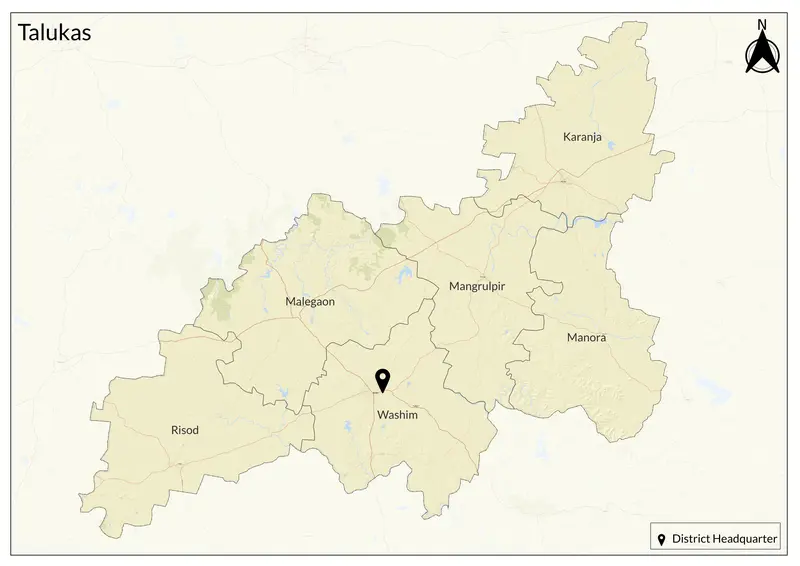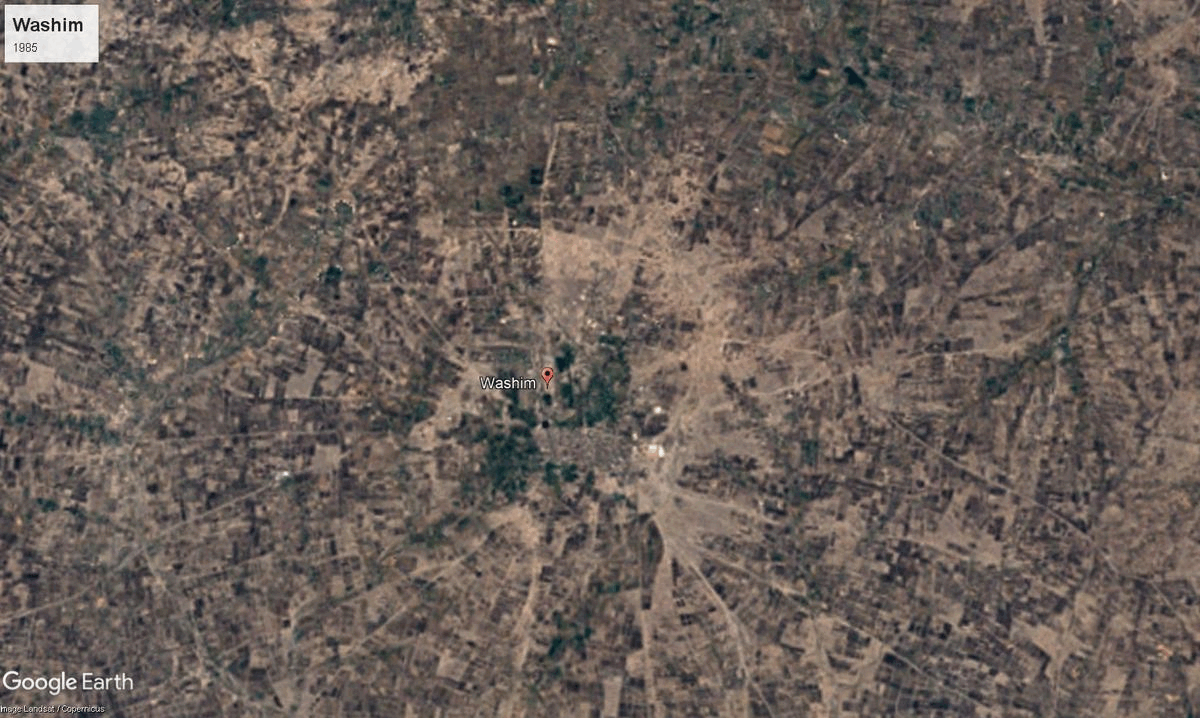Washim

5,153 sq. km
~12.74 lakh (2019)
926 (2011)
~ ₹10,645 crore (2019)
~ ₹83,565 (2019)
Washim, a district in the Vidarbha region of Maharashtra, was historically known as 'Vatsagulma', the capital of the Vatsagulma branch of the Vakataka dynasty during the 4th–5th century CE. Over time, it is believed that linguistic transformations may have led to the evolution of Vatsagulma into Washim. Some interpretations suggest a connection to the Sanskrit word Vashini, meaning "one who controls" or "a sacred place". Another perspective connects "Washim" to the Arabic name "Basim," meaning "the one that smiles." The correlation comes from the early contacts of the city with Arabs traders and migrants.
The district has been ruled by several dynasties, including the Satavahanas, Vakatakas, Chalukyas, Rashtrakutas, and Yadavas of Devagiri, followed by the Bahmani, Mughals and Maratha empires (it was an importance centre during Mughal and Maratha times). Under British rule, Washim was part of Berar province before merging into the Hyderabad State. In 1905, during the British Raj, Washim was reorganized into two districts, Akola and Yavatmal, operating under Akola district. It became part of Maharashtra in 1960 and was reconstituted as a separate district on 1 July 1998. Today, Washim consists of six talukas: Washim, Karanja, Mangrulpir, Risod, Manora, and Malegaon.
Washim is home to a wealth of temples and sacred tirthas (references in the Vatsagulmamahatmya are said to list 108 holy tanks and shrines in the area). The Padmatirth, Balaji Mandir (built in 1779, also called Dakshin Kashi), Shri Narasimha Saraswati Mandir in Karanja, and the unique Madhyameshwar Mandir draw thousands of people. The Kondeshwar Mandir at Kondala Zamare, believed to have been visited by Shri Ram, Shri Lakshman, and Sita Mata during their Vanvaas, holds great spiritual significance. Other notable places include Poharadevi Mandir and Padmatirth. The district’s communities celebrate a variety of religious and folk festivals, with traditions shaped by Marathi, Lambadi, and Urdu-speaking populations, as well as smaller groups of Jains and other communities.
Washim features a blend of hilly ranges, plain river valleys, and important water bodies like the Penganga, Arunavati, Kas and Katepurna rivers, supporting both agriculture and natural forests. Protected areas such as the Katepurna and Karanja Sohol Wildlife Sanctuaries are havens for birds and wildlife. Washim’s landscape is dotted with tanks, temples, and tirthas attesting to its ancient settlement and spiritual history, while towns like Risod, Karanja, Malegaon, Manora, and Mangrul Pir serve as regional centers.
Major crops include cotton, soybean, oilseeds, jowar, and pulses, along with Vasmat Haldi, a well-known variety of turmeric also cultivated in Hingoli. Washim’s economy is driven by agro-based industries, including cotton processing, oil mills, and small-scale industries, contributing to both industrial and agricultural growth in the region.
